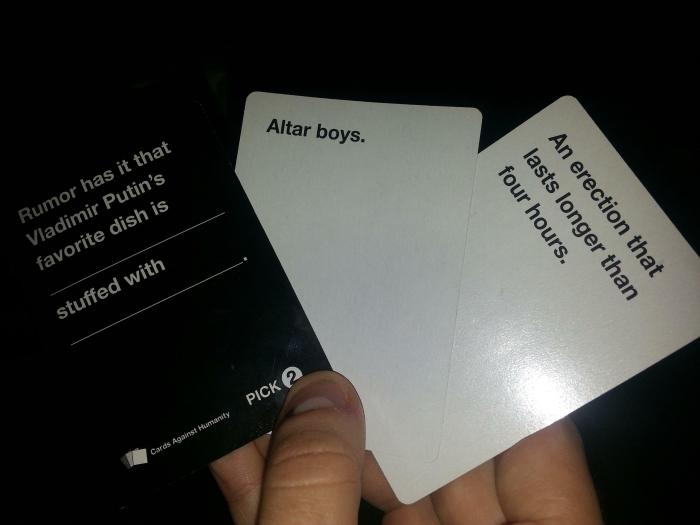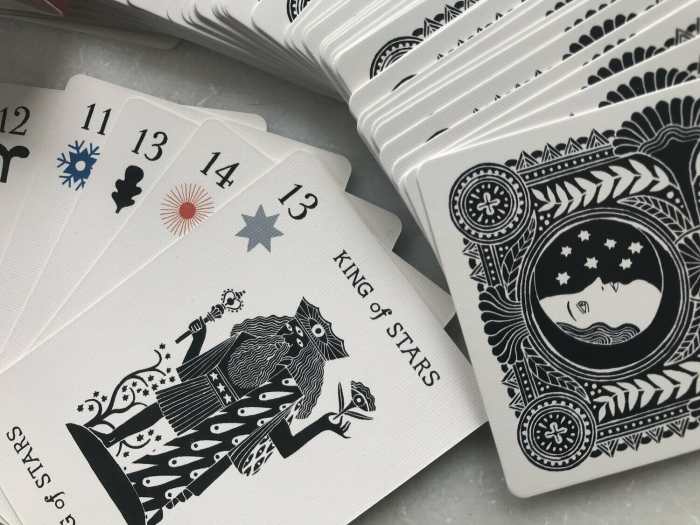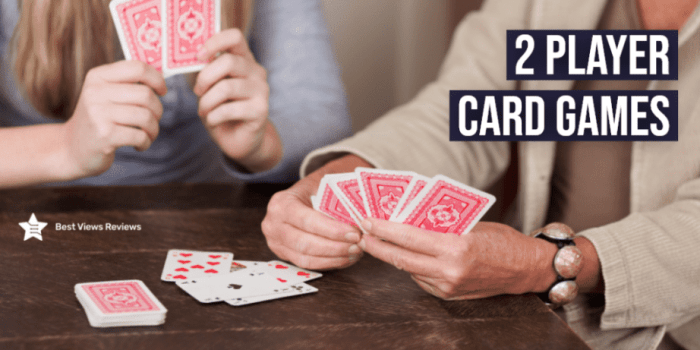
Welcome to the dazzling realm of Card games for adults, where strategy meets laughter and the stakes are as high as your friend’s glass of wine! Picture this: a gathering of friends, a table adorned with snacks, and the air thick with both competitive spirit and the scent of pizza. These card games don’t just shuffle cards; they shuffle friendships and maybe even a few secrets! Get ready to explore the top five card games that will have you dealing out laughter as you dive into the rules and strategies that make them unforgettable.
From the classic heart-thumping thrills of Poker to the cheeky antics of Cards Against Humanity, we’ll uncover the gems that make adult card nights not just enjoyable but legendary. We’ll also unveil the tactics that can turn you from a mere player into the game’s reigning champion. Buckle up; it’s going to be a wild ride through the world of cards!
Popular Card Games for Adults
Card games have long been a staple of social interaction among adults, blending strategy, luck, and camaraderie into a delightful cocktail of fun. From game nights to casual gatherings, the right card game can elevate any occasion. Here, we dive into the top five card games that adults can’t seem to get enough of, ensuring laughter and perhaps a bit of friendly rivalry.
Texas Hold’em
Texas Hold’em is not just a card game; it’s a social phenomenon that has captivated poker enthusiasts around the world. Known for its blend of skill, strategy, and a dash of luck, it’s a must-try for anyone looking to test their mettle against friends or foes.
- Number of Players: 2 to 10
- Age Group: 18 and up
- Rules and Mechanics: Each player is dealt two private cards (known as ‘hole cards’) and shares five community cards. The goal is to make the best five-card hand using any combination of the seven cards available. Betting occurs in multiple rounds, creating an atmosphere of suspense and thrill.
Cards Against Humanity
If you’re in the mood for irreverent humor and a game that’s sure to spark laughter, Cards Against Humanity is your go-to. This game takes the classic fill-in-the-blank format and turns it on its head, making it perfect for adult gatherings.
- Number of Players: 4 to 20 (the more, the merrier! or maybe not…)
- Age Group: 18 and up (definitely not for the faint-hearted)
- Rules and Mechanics: One player is designated as the Card Czar and draws a black card with a question or a fill-in-the-blank statement. Other players submit white cards secretly, aiming to create the funniest or most outrageous combination. The Card Czar then picks their favorite response, and the player who submitted it scores a point.
Uno
Uno is a classic that transcends generations. It’s easy to learn and provides endless fun, making it an essential addition to any adult game night. With its colorful cards and simple mechanics, it’s a game that anyone can pick up and play without a steep learning curve.
- Number of Players: 2 to 10
- Age Group: 7 and up (but adults love it too!)
- Rules and Mechanics: Players take turns matching a card from their hand to the card in the discard pile by color or number. Special action cards add twists, such as reversing play or skipping turns. The first player to get rid of all their cards wins, but beware: you must shout “Uno!” when you’re down to one card!
Exploding Kittens
Exploding Kittens is the ultimate blend of strategy, luck, and a little bit of mischief. With its quirky artwork and easy-to-understand mechanics, it’s a fantastic choice for adults who want to add a little chaos to their game nights.
- Number of Players: 2 to 5
- Age Group: 7 and up
- Rules and Mechanics: Players take turns drawing cards until someone draws an Exploding Kitten, at which point they explode and are out of the game unless they have a defuse card. The objective is to be the last player remaining, combining luck with strategic card play and the occasional chaotic cat-themed shenanigans.
Bridge
For those seeking a more cerebral challenge, Bridge stands out as a sophisticated and strategic game. Often played in pairs, it encourages partnership and communication, transforming casual players into competitive strategists.
- Number of Players: 4
- Age Group: 18 and up
- Rules and Mechanics: Bridge consists of bidding and playing tricks. Players communicate their hands through a bidding process, aiming to win as many tricks as possible. The partnership that fulfills their bid wins points, making it a game of both skill and cooperation.
Strategies for Winning in Card Games
In the wild and whimsical world of card games, luck may deal the initial hand, but strategy is the real ace up your sleeve. Whether you’re bluffing your way through a high-stakes poker game or trying to outsmart opponents in Hearts, the right strategies can elevate your play from amateur to ace. Let’s take a stroll through the strategic landscape, where skill trumps chance, and where a well-placed grin can win you the pot.Understanding effective strategies involves mastering the nuances of each game, avoiding common pitfalls, and comparing different approaches to find what works for you.
This knowledge can significantly increase your chances of winning while keeping you entertained along the way.
Effective Strategies for Popular Card Games
Implementing the right strategies can transform your card game experience from frustrating to fabulous. Each game has its own set of tactics that players can leverage for victory. Here are some key strategies for popular card games:
- Poker: Master the art of bluffing and reading your opponents. Pay attention to betting patterns and body language, as they can be more revealing than a toddler in a cookie jar.
- Blackjack: Learn basic strategy charts that tell you when to hit, stand, double down, or split. Remember, playing against the dealer’s face-up card is like trying to outsmart a cat staring at a laser pointer—stay sharp!
- Bridge: Communication with your partner is crucial. Use bidding conventions wisely to convey your hand’s strength without giving away all your secrets. Think of it as telepathy with a twist of competition!
- Hearts: Avoid taking points by carefully selecting which cards to play and when. Sometimes, letting others take the lead is the best way to stay off their radar—like a ninja at a tea party.
- Rummy: Focus on forming melds and discarding wisely to minimize your opponents’ options. Keep an eye on the cards they pick up—it’s like playing psychic detective without the cape!
Avoiding Common Mistakes
Even the most seasoned players can trip over common pitfalls, usually while thinking they’re too clever for their own good. Identifying these mistakes is key to sharpening your strategy. Here are some blunders to dodge:
- Overvaluing your hand: Just because you have a full house doesn’t mean you should go all-in in poker. Don’t let your ego blind you—keep your poker face calm and your judgments sound.
- Ignoring your opponents: Focusing solely on your cards while neglecting to observe your opponents’ actions is akin to watching a magician while missing the trick. Keep your eye on the ball—or in this case, the cards!
- Chasing losses: Doubling down on bad plays in hopes of recouping losses can lead to despair. Remember, sometimes the best move is to fold and regroup—like a superhero taking a breather after a tough battle.
- Playing too conservatively: While caution is wise, playing too safely can leave you out of the game. Sometimes, you have to take calculated risks—after all, fortune favors the bold (and possibly the slightly insane).
Comparison of Strategies Across Card Games
Different card games require different strategic approaches, each with its own unique flavor. Understanding these contrasts will give you a richer perspective on gameplay. Here’s a comparative look:
| Game | Key Strategy | Common Pitfall |
|---|---|---|
| Poker | Bluffing effectively while reading opponents | Overcommitting to weak hands |
| Blackjack | Utilizing basic strategy for card values | Not following the dealer’s up card |
| Bridge | Communicating with your partner through bids | Misunderstanding partner’s signals |
| Hearts | Avoiding point accumulation | Taking unnecessary risks on high cards |
| Rummy | Forming melds efficiently | Focusing only on personal hands |
In the end, card games are not just about cards; they’re about mind games, psychology, and occasionally, a dash of humor. So shuffle those cards, refine your strategies, and prepare for a fun-filled showdown with friends that may or may not end in friendly banter…and possibly the occasional dramatic exit!
The Relationship Between Card Games and Board Games

Card games and board games have been engaged in a passionate tango since the invention of leisure time. While card games offer a portable thrill, board games provide a vast landscape for strategic conquests. Together, they complement each other like peanut butter and jelly—if jelly was a hand of five hearts and peanut butter involved a dying dragon. Understanding their relationship reveals mutual benefits that can elevate your game nights to legendary status.Card games can serve as the perfect appetizer before the main course of board games, allowing players to warm up their brains and flex their strategic muscles.
Moreover, many popular card games have found a second life in board game adaptations, enriching the table-top experience for both casual players and die-hard fans. The dynamics of each type of game serve to enhance the overall experience, creating a delightful blend of strategy, chance, and social interaction.
Card Games with Board Game Adaptations
Several card games have made the transition to the world of board games, bringing their engaging mechanics and quirky themes along for the ride. Here is a table showcasing some of these noteworthy adaptations:
| Card Game | Board Game Adaptation |
|---|---|
| Uno | Uno: The Board Game |
| Exploding Kittens | Exploding Kittens: The Party Game |
| Magic: The Gathering | Magic: The Gathering Arena |
| Cards Against Humanity | Cards Against Humanity: The Board Game |
| Gloom | Gloom: The Board Game |
The adaptations offer valuable insights into how the mechanics of card games can be expanded to board game formats, creating a varied gaming experience that can captivate players of all types.
Benefits of Playing Card Games versus Board Games for Adults
Engaging in card games as opposed to board games presents distinct advantages that can influence game night choices. Card games often require less setup time, making them an ideal choice for spontaneous gatherings or when the clock is ticking down to the next scheduled meeting of friends. In the world of card games, you can jump right in and start strategizing without having to arrange a battleground of miniatures or elaborate boards.Additionally, card games tend to be more portable, fitting snugly in a pocket or backpack, allowing for entertainment on the go—whether at a bar, picnic, or the back of an Uber.
They also typically accommodate a range of player numbers, from a couple to a crowd, making them versatile options as the guest list varies.Furthermore, card games can often lead to faster-paced gameplay, ensuring that all participants are engaged throughout the match, making it easier to connect and share some hearty laughs. As the saying goes, “It’s not the size of the game, but the fun you have that counts!”
Card games serve as the perfect appetizer before the main course of board games!
Closing Summary

So there you have it, a whirlwind tour through the fabulous universe of Card games for adults! Whether you’re a strategic mastermind or just in it for the giggles, there’s something for everyone to enjoy. Remember, it’s not just about the cards; it’s about the memories you create and the friendships you strengthen. Now, go forth, gather your friends, and let the games begin—may the best bluffer win!
Essential Questionnaire
What is the best card game for a large group of adults?
One of the best card games for large groups is “Cards Against Humanity,” as it encourages hilarious interactions and accommodates many players.
How long do card games typically last?
Card games can vary, but most games last anywhere from 30 minutes to a couple of hours, depending on the game and the players.
Do I need to be skilled to enjoy card games?
No, many card games are easy to learn and focus more on fun and social interaction than on skill, so everyone can enjoy the experience!
Can card games improve social skills?
Absolutely! Playing card games encourages communication, teamwork, and even some friendly competition, all of which can enhance social skills.
Are there any card games that are suitable for mixed-age groups?
Yes, games like “Uno” and “Exploding Kittens” are great because they are simple enough for younger players but still fun for adults!

